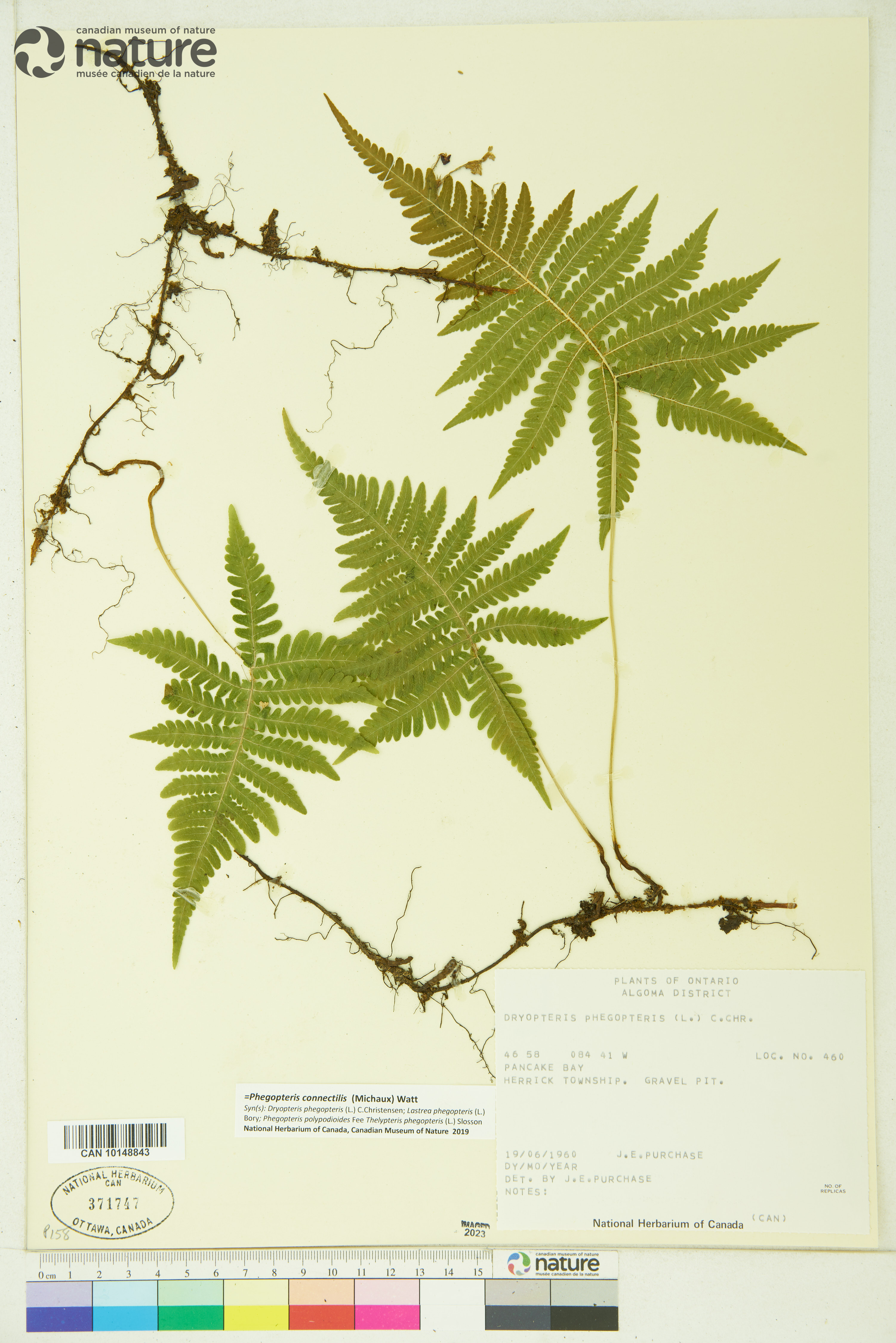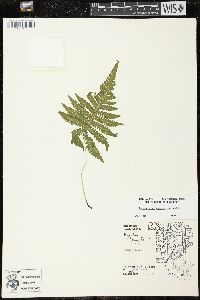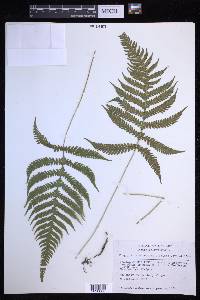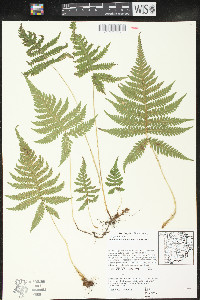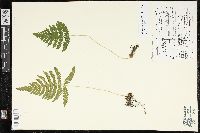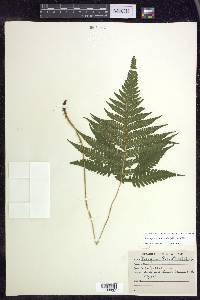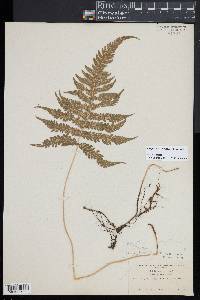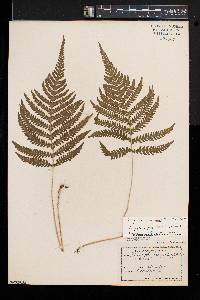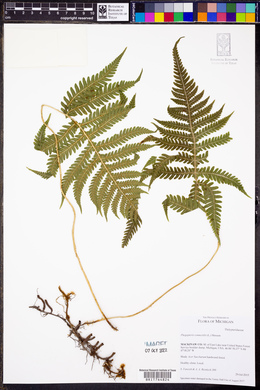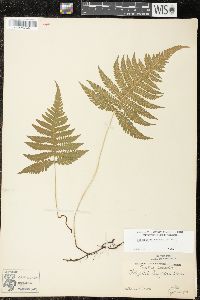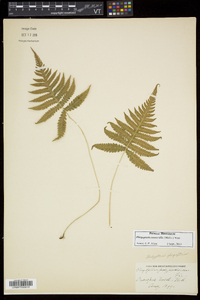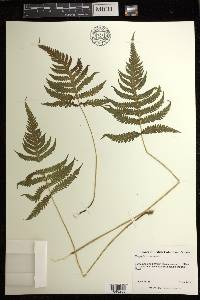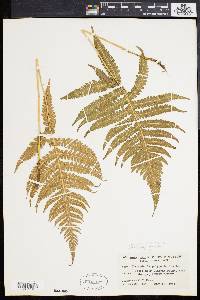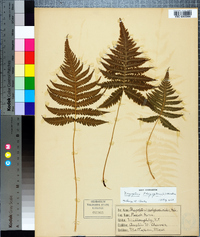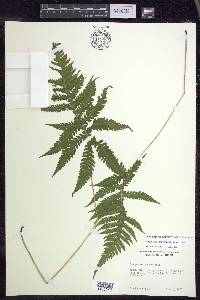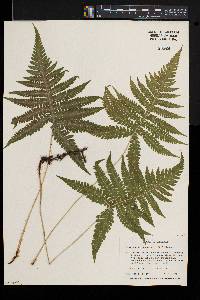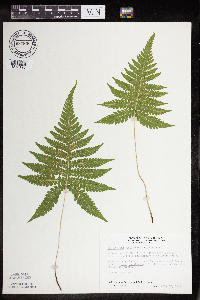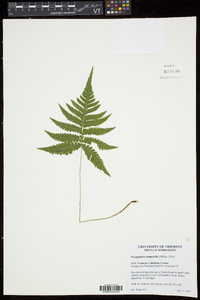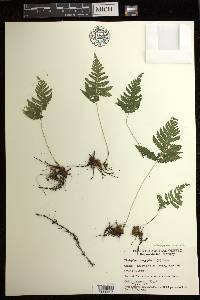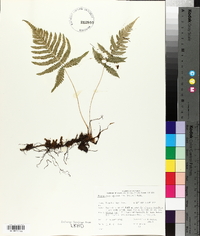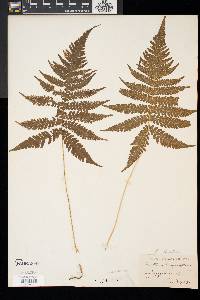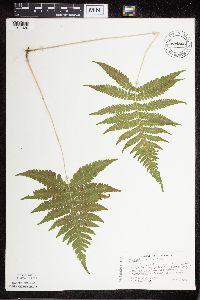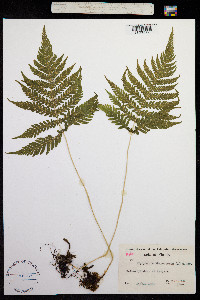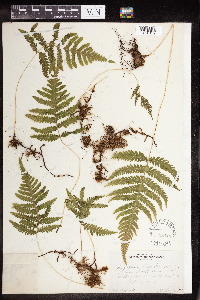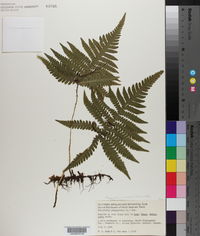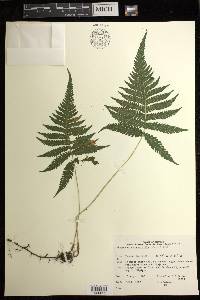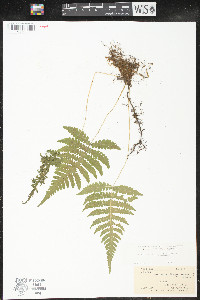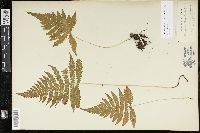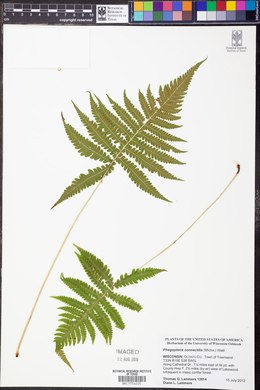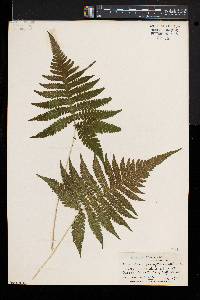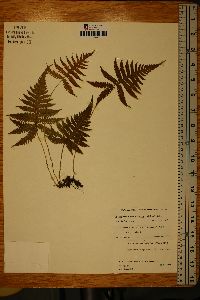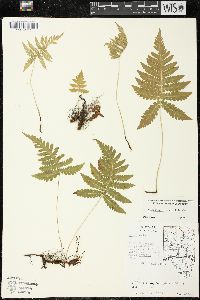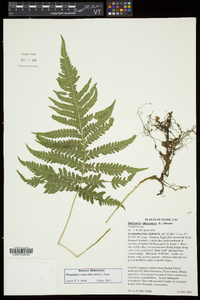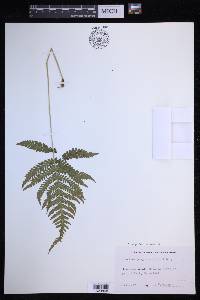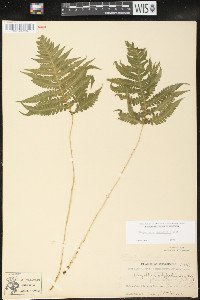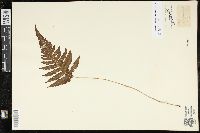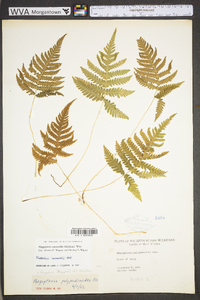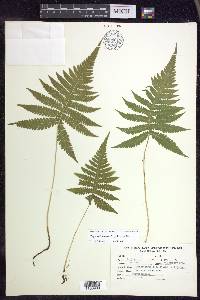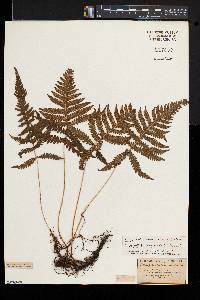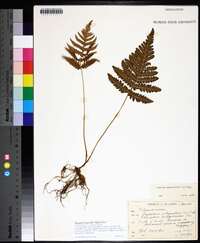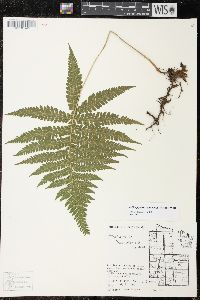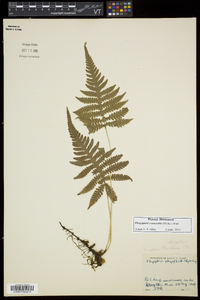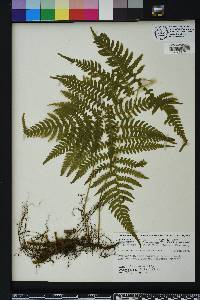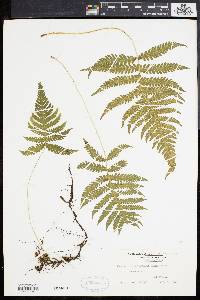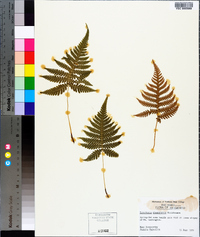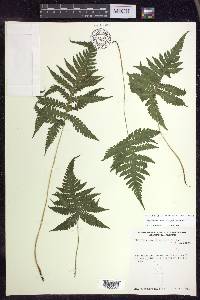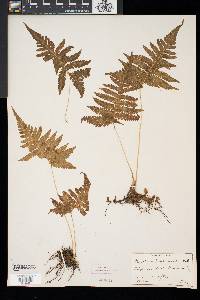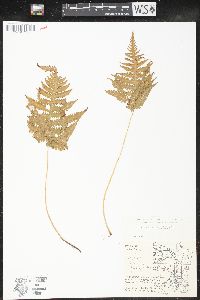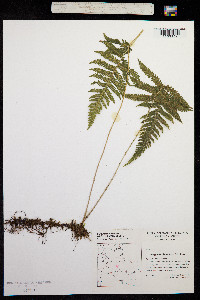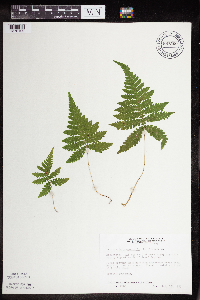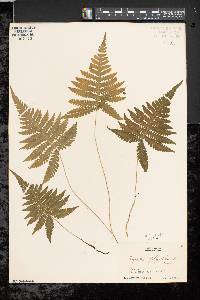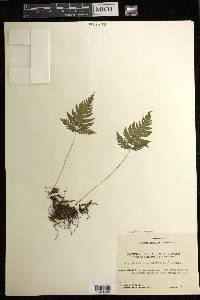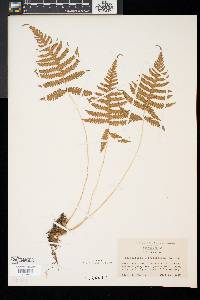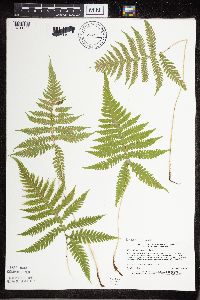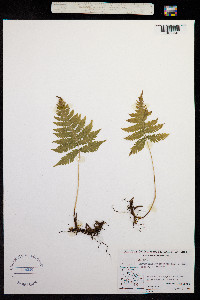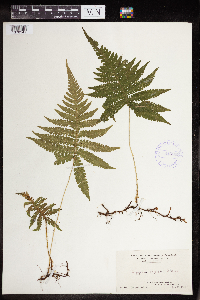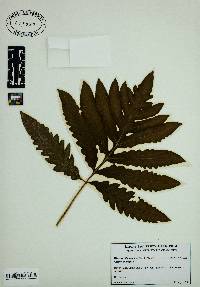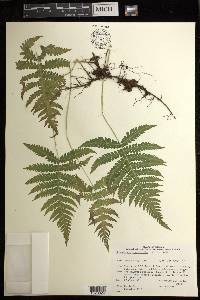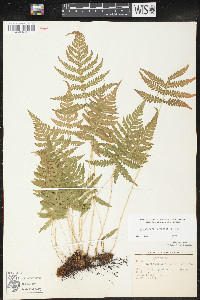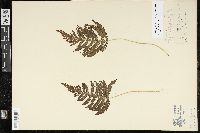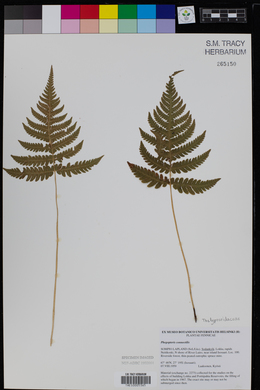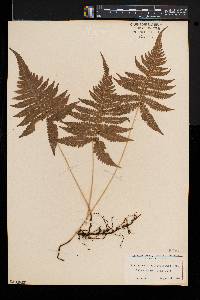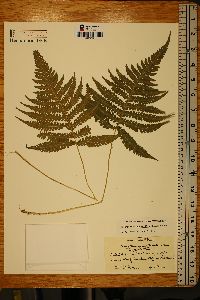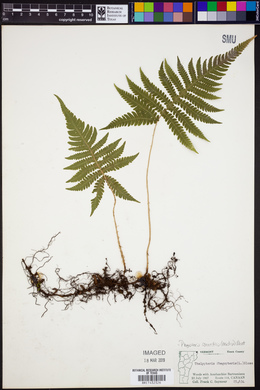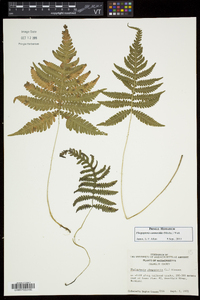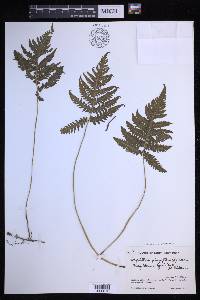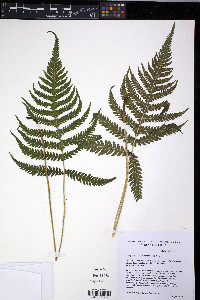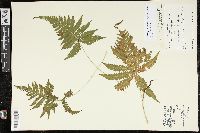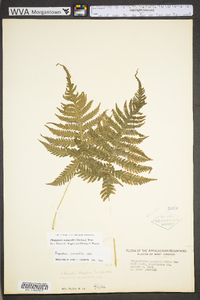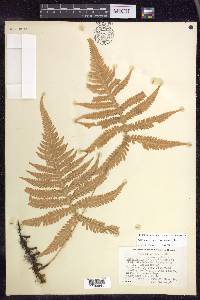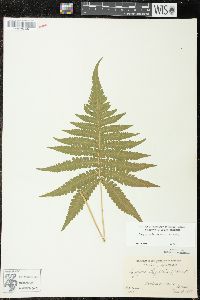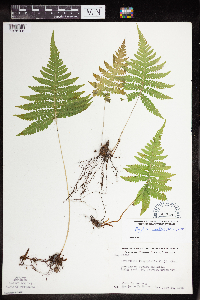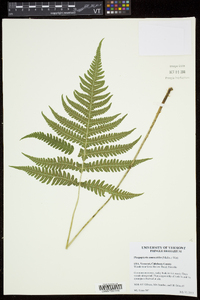Phegopteris connectilis
|
|
|
|
Family: Thelypteridaceae
Narrow Beech Fern
[Aspidium phegopteris (L.) Baumg., morePhegopteris phegopteris (L.) Keyserl., Polypodium phegopteris L.] |
Stems long-creeping, 1--2(--3) mm diam. Leaves monomorphic, dying back in winter, often 1--2 cm apart, 15--60 cm. Petiole straw-colored, (8--)15--36 cm × 1--3 mm, at base with scales brownish, lanceolate, glabrous or sparingly hairy on margin. Blade narrowly to broadly deltate, usually somewhat longer than broad, (6--)12--25 cm, proximal pinnae longest and slightly narrowed at base, spreading or reflexed. Pinnae deeply pinnatifid, (3--)6--12 × 1--3.3 cm, lowermost 1--2 pairs separate, sessile, more distal pairs strongly adnate and connected by narrow rachis wing; segments entire, or those of proximal pinna pair sometimes crenate, uncommonly shallowly lobed; proximal pair of veins from adjacent segments meeting margin above sinus, veins simple or sometimes forked in lowermost pinnae. Indument abaxially of moderately to densely set hairs 0.3--1 mm along costae, veins, and blade tissue, costae also with scales light tan to shiny brown, ovate-lanceolate, spreading, to ca. 3 mm, scales sometimes sparingly hairy on margin. Sori subterminal on veins. n = 2 n = 90, apogamous. In moist, strongly to moderately acid soil, or on rocks in shaded rock crevices; 0--2200 m; Greenland; St. Pierre and Miquelon; Alta., B.C., Man., N.B., Nfld., N.W.T., N.S., Ont., P.E.I., Que., Sask., Yukon; Alaska, Conn., Del., Idaho, Ill., Ind., Iowa, Maine, Md., Mass., Mich., Minn., Mo., Mont., N.H., N.J., N.Y., N.C., Ohio, Oreg., Pa., R.I., Tenn., Vt., Va., Wash., W.Va., Wis.; Eurasia. Perennial fern 15 - 60 cm tall Leaves: green, 6 - 25 cm long, usually longer than broad, narrowly to broadly triangular in outline, but pinnately compound with leaf divisions (pinnae) deeply pinnately lobed. All the leaves die back in winter. Rhizome: long-creeping, 1 - 3 mm in diameter, hairy, and with scales at the apex. Leaf stalks: spaced about 1 - 2 cm apart, straw-colored, 8 - 36 cm long, 1 - 3 mm wide, with brownish, lance-shaped scales near base. Spores: numerous, all of one kind, and single-sectioned (monolete). The spores give rise to the gametophyte (the sexual phase of the plant), which is small, green, heart-shaped, usually hairy or glandular, and sits above the ground. Similar species: Phegopteris connectilis is most similar to P. hexagonoptera, but that species differs by having the lowest pair of primary leaf divisions (pinnae) quite a bit longer (10 - 20 cm), and even these lowest pairs have a wing of leaf tissue that connects them to the pairs above them along the central "branch" (rachis). Further, the scales on the underside of the pinnae "midribs" (costae) are whitish to light tan, and narrowly lance-shaped (only three to five cells wide at the base); the hairs on the underside of the costae are usually less than 0.25 mm long with only a few up to 0.5 mm long; the larger pinnae lobes are further deeply pinnately lobed; and the veins of the pinnae lobes are always forked or pinnately branched. Also similar are our two species of Thelypteris, T. noveboracensis and T. palustris var. pubescens, but both of those species have leaf blades with the leaf divisions (pinnae) fully divided to the "midrib" (rachis), never with connecting tissue between the pinnae, and the "midribs" of the pinnae (costae) are obviously grooved on the upper side. Members of the Dryopteridaceae family (genera such as Dryopteris, Cystopteris, Woodsia, Athyrium, and Deparia) may be confused with this species, but members of that family lack needle-like hairs, often possess scales on the leaf blades (not just the costae), the leaf blades are typically compoundly divided much more than once, and the veins on the final leaf divisions often fork. Habitat and ecology: Only reported from Racine County, Wisconsin, though the range for the species does apparently include most of the Chicago Region. Possible habitats include moist, probably acid soil, or on rocks in shaded crevices. Occurence in the Chicago region: native Notes: The genus Phegopteris is often included within the genus Thelypteris as a separate subgenus (this species then becomes Thelypteris phegopteris L.). We follow the Flora of North America (1993), which segregates them at the genus level rather than the subgenus level. In the past, both these genera as well as the entire Thelypteridaceae family were placed in the Dryopteridaceae family, and in the genus Dryopteris (this species then Dryopteris phegopteris (L.) C. Christensen). Current work clearly separates these families, and in fact there is no close relationship between the two. Members of the Dryopteridaceae lack needle-like hairs, often possess scales on the leaf blades, the leaf blades are typically compoundly divided more than once, the veins on the final leaf divisions often fork, and there are anatomical differences in the vascular bundles of the leaf stalks. Even other sources place both the Thelypteridaceae and Dryopteridaceae within a larger context of the Aspleniaceae family. The oldest systems had all of these families (and most true ferns) placed in a very wide sense of the Polypodiaceae family. That very large family group is quite useless in terms of identifying how various fern genera and species are related from an evolutionary standpoint. Etymology: Phegopteris is from the Greek words phegos, meaning Oak, and pteris meaning fern. Connectilis means "to link together". Author: The Field Museum |

